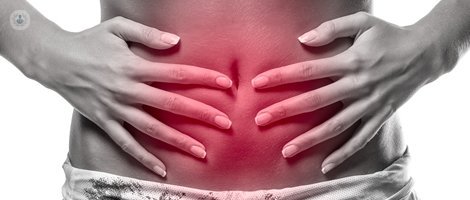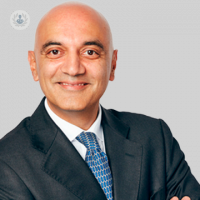How to spot the signs of endometriosis and how it can be treated
Written by:
Endometriosis is a common gynaecological condition whereby the tissue that normally lines the inner aspect of the womb (the “endometrium”) is found in other parts of the body – most commonly in the pelvis. Sadly many women suffer with the symptoms of endometriosis for years before a diagnosis is made. There are now national bodies and campaigns to highlight the awareness of the condition amongst women and healthcare practitioners.

What are the symptoms of endometriosis?
Just as when the womb lining tissue normally bleeds on a monthly cyclical basis, other areas also bleed. This causes irritation and inflammation in the surrounding areas and tissues. Typically, this causes the symptoms of painful periods, and pain when making love. Depending on the exact location of the endometriosis, some women may experience cyclical bleeding in their urine or bowel motions. In severe cases, women will experience pain on opening their bowels at the time of their period. Over time this can lead to chronic pelvic pain. Fertility may be also be compromised in some women.
How is it diagnosed?
A specialist gynaecologist assesses a patient's symptoms and conducts an examination. The only way of making a certain diagnosis is by performing an operation, a laparoscopy, which visualises the pelvic organs. Biopsies may then be taken to confirm the diagnosis, or treatments performed to remove the areas of endometriosis. Before surgery, a magnetic resonance imaging (“MRI”) scan, or pelvic ultrasound scan can help the diagnosis.
How is it treated?
Depending on the patient's symptoms, examination, investigations and, most importantly, her treatment wishes, a management plan is suggested. Treatment should be coordinated by teams of experts including gynaecologists, nurses, specialists in scanning or imaging, specialists in bowel and bladder problems, and pain specialists.
Treatments may include pain management strategies, physiotherapy and psychological techniques. Some women find dietary modifications useful and many women turn to non-conventional medical techniques, such as acupuncture and mineral supplements. Though some women find them beneficial, there is little evidence to support its effective use.
Medical techniques, as well as pain relief medication, aim to control the menstrual cycle. This could mean taking some form of hormonal pill (most often the contraceptive pill), to help lighten or reduce the frequency of the menstrual period in order to reduce pain. There can be different side effects and risks with different pills and one-size does not fit all. If a woman has heavy painful periods, which can often be associated with a condition called adenomyosis (endometriosis within the muscle of the womb), then a progesterone releasing coil is often a popular choice for women.
When is surgery an option?
For many women who have failed medical treatments, have not achieved a diagnosis, or are having problems with fertility, surgery becomes an appropriate option. It can offer a definitive solution, and varies in complexity, from simply achieving a diagnosis to radical surgery. Treatment goals vary, the aim may be to enhance the chances of fertility, to remove a large endometriotic cyst in an ovary, or to cure to their debilitating symptoms with a hysterectomy and removal of ovaries (normally a last resort). All surgery, involves a degree of risk and requires a convalescence period. It is important that these factors are carefully balanced with the potential benefits that surgery offers.


